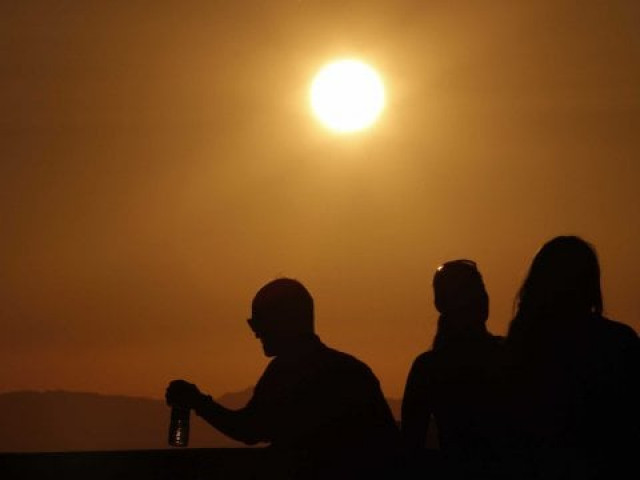Some like it hot, but heat can be fatal
Here are some key facts and figures about the summer heat

PHOTO: REUTERS
modern records began, marking the third consecutive year of
record-high temperatures. Less than four months into 2017, parts
of Australia and India are already in the throes of heat waves.
While sunny skies may be synonymous with summer fun in some
parts of the world, too much heat can be fatal. It is estimated that between 15,000 and 19,000 people died during France's heat wave of 2003, while the United States' Centers for Disease Control and Prevention [CDC] said some 600 Americans died every year from exposure to extreme heat between 1999 and 2010.
The Thomson Reuters Foundation spoke to half a dozen climate
scientists to understand what rising temperatures mean for human
health. Here are some key facts and figures:
Hot weather to persist for next three days in Sindh
* Hotter days and nights, and heat waves will become more
common. Multiple studies have found that heat waves are
happening more frequently, while cold spells declined in urban
areas in the last 40 years.
* Extreme heat can cause heat-related illnesses, such as
heat stroke and exhaustion, and increase mortality. It can also
exacerbate existing health conditions. Heat stress occurs when
the body absorbs more heat than is tolerable.
* The total number of days on which heat reaches
"health-threatening levels" will rise rapidly over the next
several decades, noted one study by the Institute for Social and
Environmental Transition-International [ISET-International] and
the National Center for Atmospheric Research [NCAR]. Another
recent study by British researchers warned that conditions that
have challenged and overwhelmed people in the most heat-stressed
regions could become "much more frequent", while population
growth will make things worse.
* Urban centres in the developing world will be hit hardest.
They tend to be hotter than rural areas due to factors including
population density, pollution from industrial activities, and
the presence of buildings and machinery that create heat. This
"urban heat island" effect is well known, but will worsen with
rising temperatures.
Australia warns of 'catastrophic' fire conditions amid heatwave
* New populations will become heat-stressed while those
already exposed to dangerous levels of heat will be subject to
harmful conditions more often, scientists say.
* With a temperature rise of 1.5 degrees Celsius, cities in
China, India, Bangladesh, Ivory Coast, Nigeria, Vietnam and
Myanmar will regularly start to experience heat stress,
according to the UK study.
* If global temperature rise hits 2.7 degrees Celsius,
Tokyo, Beijing and Manila will also be affected, while a 4
degree rise would see New York and Rio de Janeiro join the club.
* Southeast Asia faces a 16 percent loss of labour capacity
in the next three decades due to heat stress, said a study by
risk consultancy Verisk Maplecroft. A separate report by the
UN Development Programme, International Labour Organisation
and the Climate Vulnerable Forum said emerging economies could
lose as much as 10 percent of their daytime working hours due to
searing temperatures.
Heatwave similar to 2015 expected in Karachi this year
* The World Health Organisation [WHO] has estimated that
without adaptation measures, there will be nearly 65,000
additional deaths annually among people over 65 due to heat
exposure in 2030, with the greatest impacts in Asia-Pacific.
* Humidity levels and night-time temperatures play an
important - but often neglected - role, because they influence
the body's ability to cool down. Daytime peak temperatures can
be dealt with partially by seeking shade and sweating, but it is
harder to act at night.
* According to the WHO, ideal room temperature should be
below 32 degrees Celsius during the day and under 24 degrees
Celsius at night.
* Rice, Asia's staple food, is highly susceptible to heat
stress, with yields plummeting if temperatures are above 35
degrees Celsius for 10 days during the reproductive stage.



















COMMENTS
Comments are moderated and generally will be posted if they are on-topic and not abusive.
For more information, please see our Comments FAQ